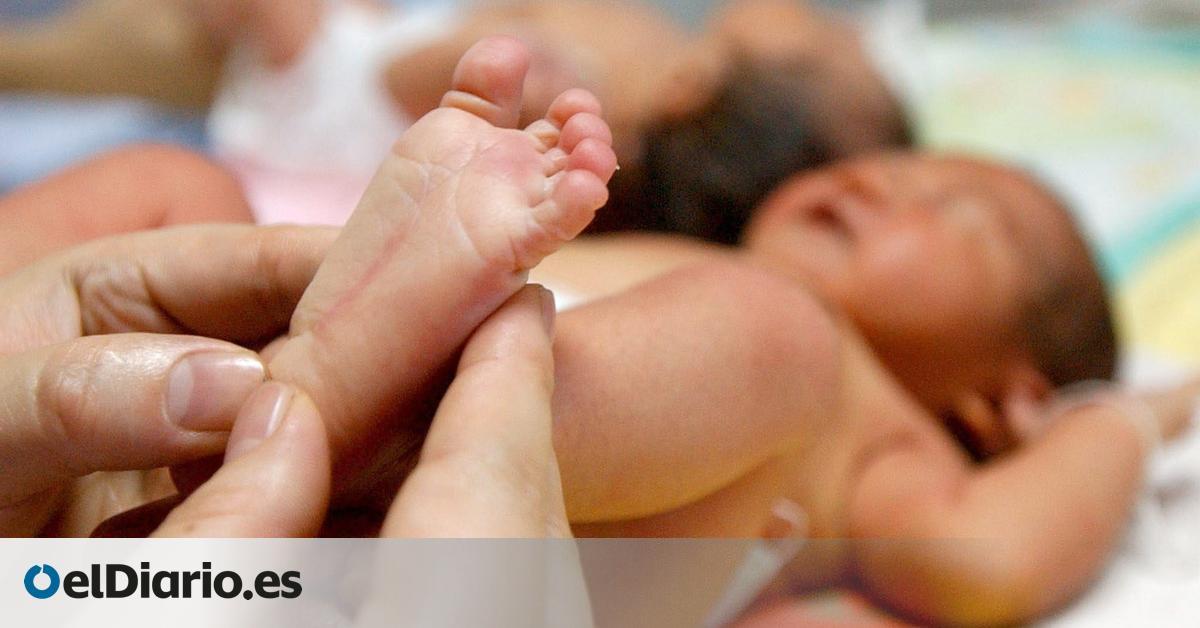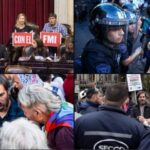
Three autonomous communities have taken the lead. Galicia, Madrid and Catalonia have announced in the last month that they will finance the immunization of babies against respiratory syncytial virus (RSV). This infection is the main cause of bronchiolitis which, although it usually appears with mild symptoms among adults, causes more serious symptoms among children. Around one in every 56 healthy children under one year of age is admitted for this reason, an incidence that tends to stress hospitals every year and that this season has forced different ministries to implement contingency plans due to the very high occupancy of some centers and the coincidence with the flu and COVID-19.
The day after canceling the most advanced study of the HIV vaccine: “It has not been a wasted effort”
Further
However, when the president of the Xunta, Alfonso Rueda, boasted that Galicia would be the first region “in the world” to finance nizers, The new Astrazeneca drug did so without knowing when it will begin to be marketed in Spain, or at what price, or how that position could influence the negotiations between Health and the laboratory. Then came Madrid, which did clarify that it would include it in its portfolio “as soon as it is available”, and Catalonia.
In January, the Spanish Association of Pediatrics already recommended the use of nirsevi food for infants under six months and up to two years in risk groups. “It is not a vaccine, it is a monoclonal antibody,” explains the president of the National Association of Nursing and Vaccines (Anesvac), José Antonio Forcada. The difference is that with a vaccine it is the body itself that generates the antibodies, while in this case, they are injected directly to generate protection in babies.
In vaccines such as rubella or measles, boys and girls are inoculated from the year of life. According to the spokesman for the Spanish Society of Infectious Diseases and Clinical Microbiology (Seimc), José María Navarro, during the first months it is difficult to immunize babies because “they usually have antibodies from the mother, who has transmitted them to them, so it does not generate its own”. “Having a drug that sticks around long enough to protect in that critical phase is positive,” he says.
The European Medicines Agency (EMA) recommended the marketing of nirsevi food on October 31, 2022, after the drug was shown to be effective against the disease in three main studies. In one of them, with 1,490 healthy infants, it was found that in the group that had received the immunization only 1.2% had required medical attention, compared to 5% who had received placebo.
In a second group of 1,453 infants, the results were comparable. 2.6% of those who received the drug required medical attention after developing the disease, compared to 9.5% of those who received placebo. In a third study, the efficacy of nirsevi food with that of palivizumab, which is already administered to babies at risk, with good results. In the first case, immunity failed in 0.6% of cases (4 of 616) and in the second, in 1% (3 of 309).
In order for the drug to be marketed in Spain, another double pathway must be completed. On the one hand, that the Spanish Agency for Medicines and Health Products (Aemps) prepare a therapeutic positioning report (IPT), in which it evaluates its effectiveness and that the General Directorate of Pharmacy decides whether to finance it or not. These procedures, which began in November, usually last around six months.
In parallel, the inter-ministerial Commission for prices of medicines and health products, in which the autonomous communities are present, has to negotiate with Astrazeneca to define its maximum price. In these conversations, which are usually tough, each party plays its card to get the most advantageous economic deal. Afterwards, each community can negotiate its own agreements, always below that maximum price.
“Price unknown”
In addition to these two channels, there is another channel: that of the Report on the Vaccination Program and Registry, which has not yet ruled on this new drug. Once the previous works are known, it must decide on the use that is given to it, its importance and the priority it has in terms of Public Health. At this time there is already a working group within the paper that is evaluating its inclusion, as elDiario.es has learned. You can, for example, recommend it or include it in the vaccination schedule, for all children or for those you consider.
And this is what other communities claim. “The vaccine has not yet gone through the price commission, that is, at the moment the price with which it can be purchased on the market is unknown, nor the distribution capacity that pharmaceutical companies will have,” say sources from the Ministry of Health of the Balearic Government, which indicate that “the experts of the national vaccine presentation have to assess which public they are aimed at”. Asturias will also include prophylaxis with monoclonal antibodies against respiratory syncytial virus “if so recommended by the Vaccine Report and approved by the Public Health Commission.”
In the same line they have spoken from the council of Castilla-La Mancha, indicating that they want “the opinion of the technicians and the consensus with the Ministry.” And from the Extremadura Health Service, whose policy, they indicate, “has always been to apply the vaccination schedule and the recommendations of the Report, which is a scientific body.” In the Valencian Community, sources from the Ministry agree that “when the Ministry’s Public Health approves the bronchiolitis vaccination, it will be included in the vaccination schedule.” A position similar to that held by the Region of Murcia, which awaits a favorable report from the presentation.
And although each community has decision-making capacity, there are several departments that condition the immunization of the smallest against RSV to what the vaccine presentation decides, aimed at studying the situation of diseases susceptible to vaccination, their formulation and the monitoring of measures for its prevention and control. “For the report on registries and vaccines to recommend it, there must be a prior study and a cost-effectiveness evaluation,” says Forcada, who considers that “normally, scientific societies tend to be a little ahead of the administration” in this type of recommendations.
The recommendation of the scientific societies is to immunize babies at the beginning of the RSV season, in autumn, during those first six months of life and a second time the following year if they are considered a risk population. It is a “short-medium term” protection, indicates Forcada, precisely when there is greater risk. “The younger the child, the more likely that disease can be serious,” she explains.
According to the latest report from the acute respiratory infection sentinel surveillance system, with data from March 20 to 26, since the start of the 2022/23 season, the positivity rate of samples analyzed for suspected RSV in hospitals was 16 .4%, with 798 cases, above 10.8% for SARS-CoV-2 and 12% for influenza. On the same dates, last season the positivity was 13.9%, but the cases analyzed fell to 257.
Experts have pointed out some peculiarities this year compared to the seasons prior to the coronavirus pandemic, such as the earlier appearance of the RSV and flu epidemics. “Children have been isolated, highly protected and, once respiratory normality has returned, there have been more cases,” explains Forcada. This raises another uncertainty about immunity: “Before, we knew when the season was going to arrive but now we are not so clear, so we have to trust classical epidemiology, which tells you that in September we started with RSV and in December, with the flu”.
Source: www.eldiario.es

